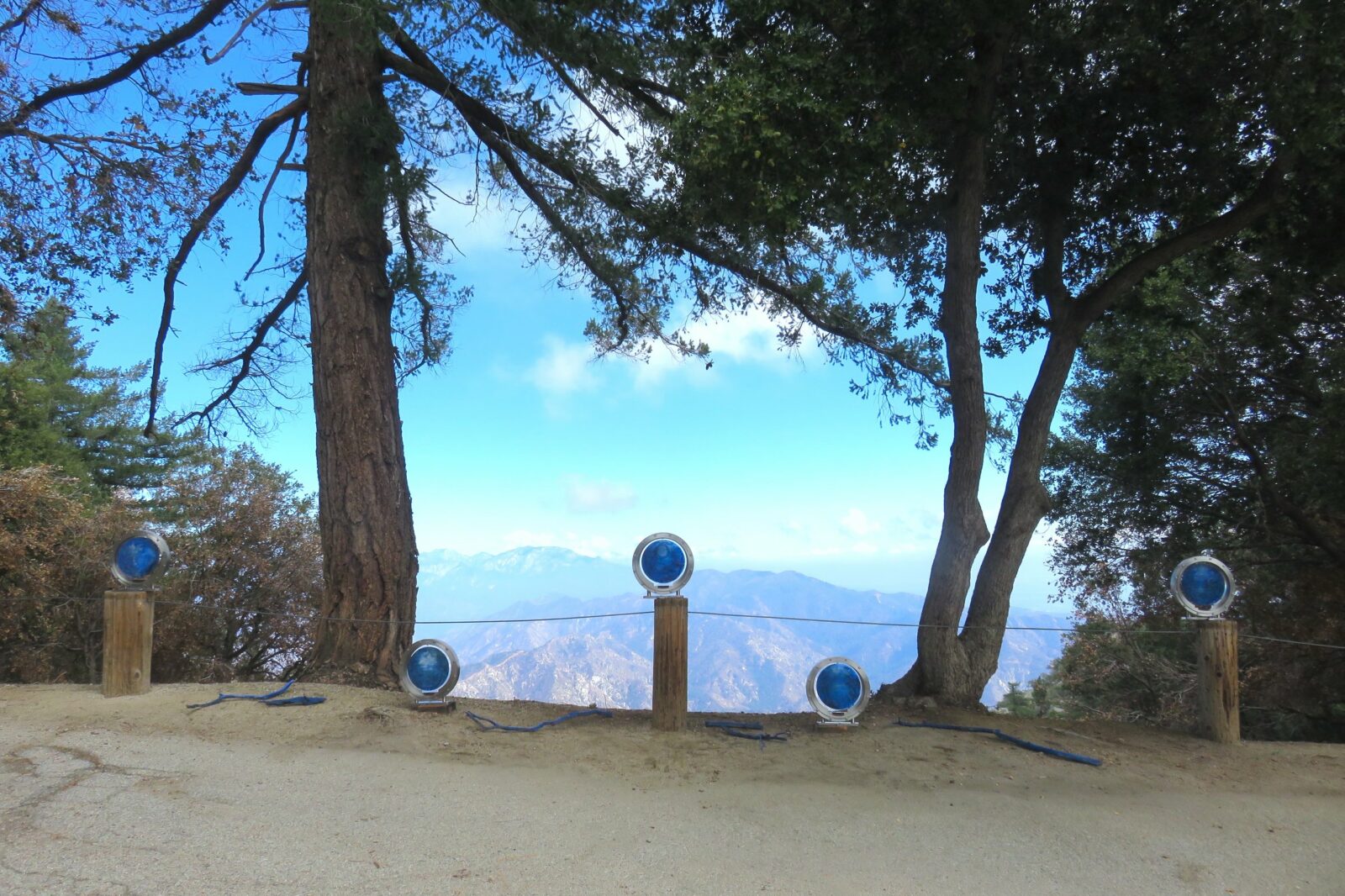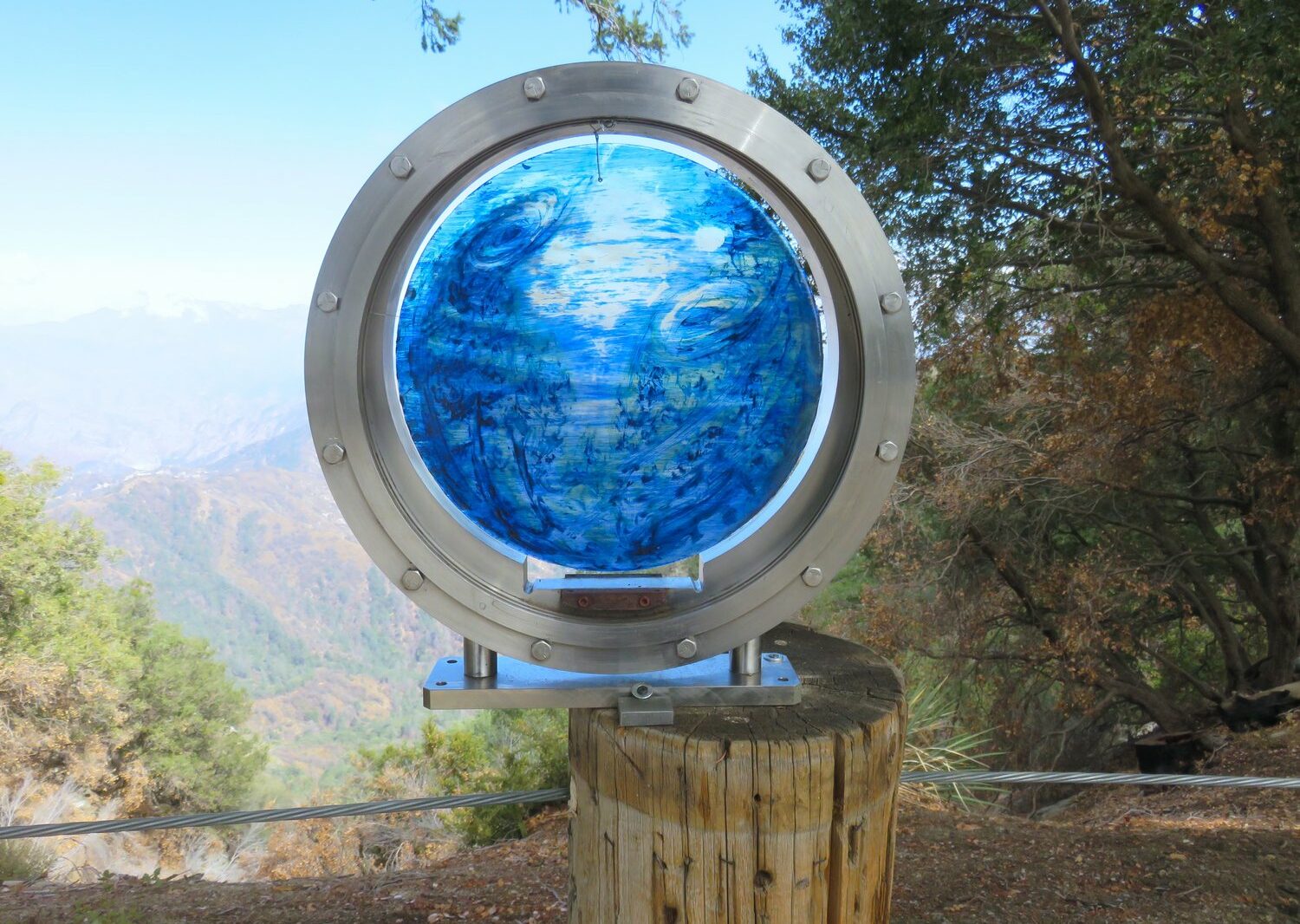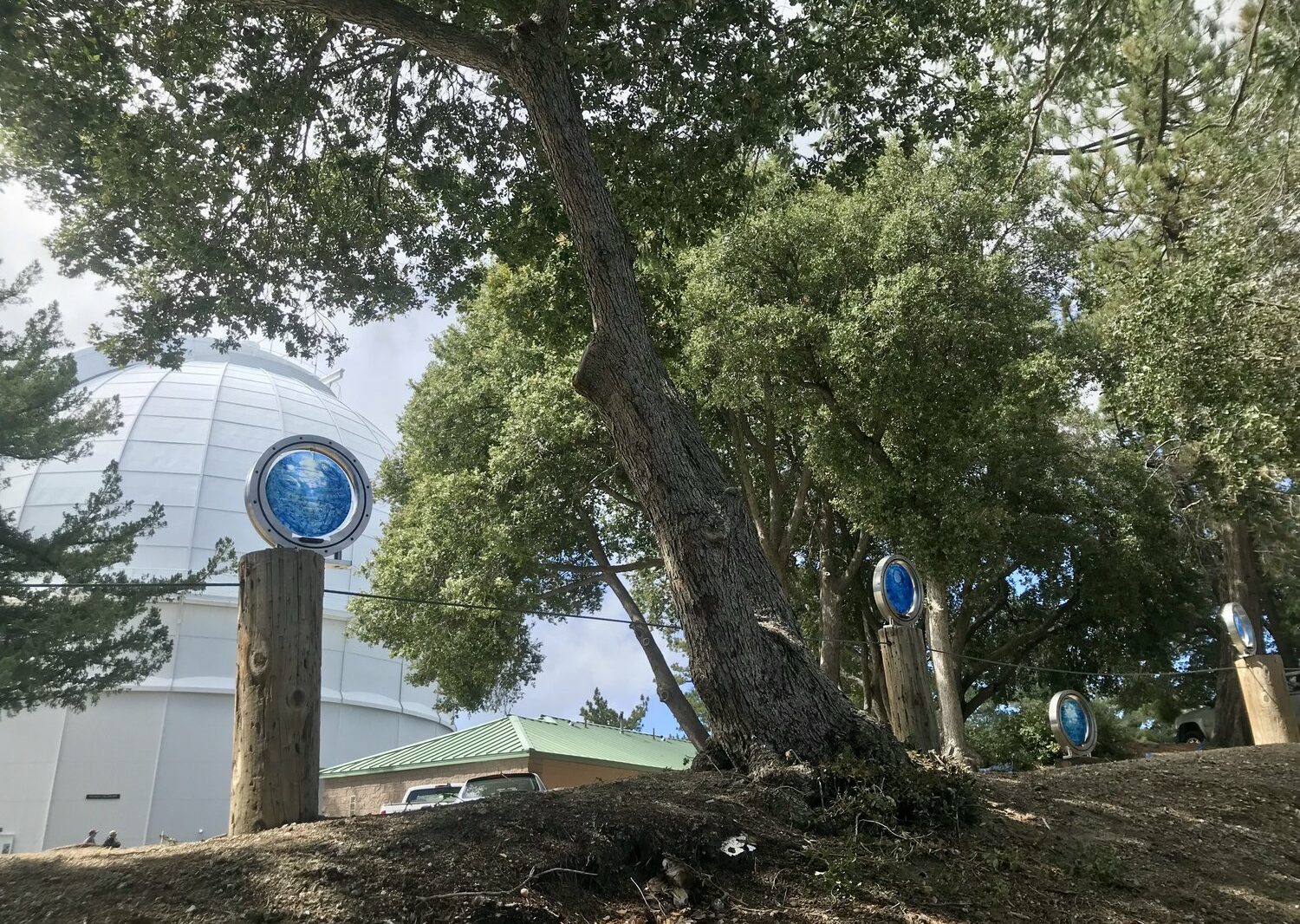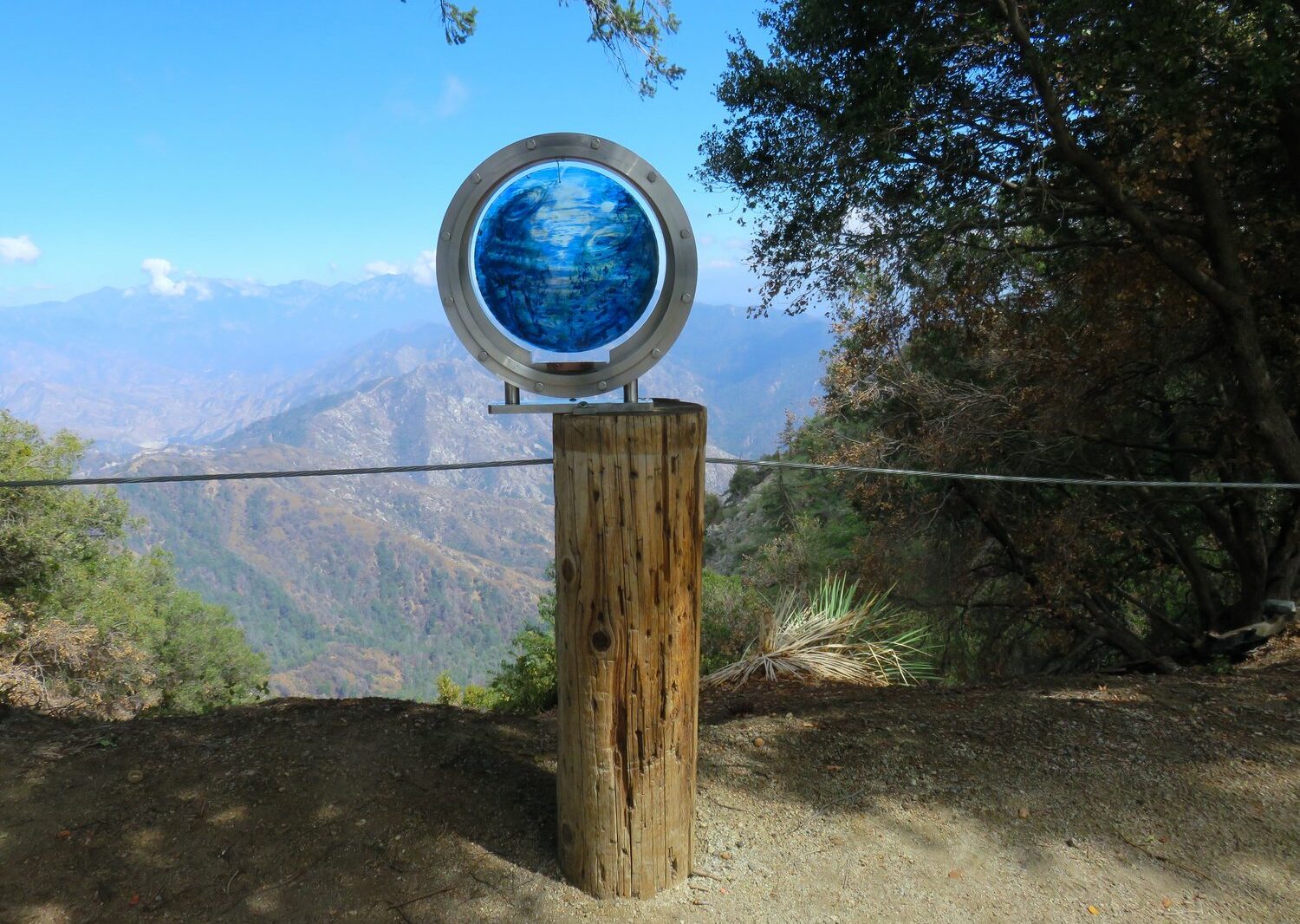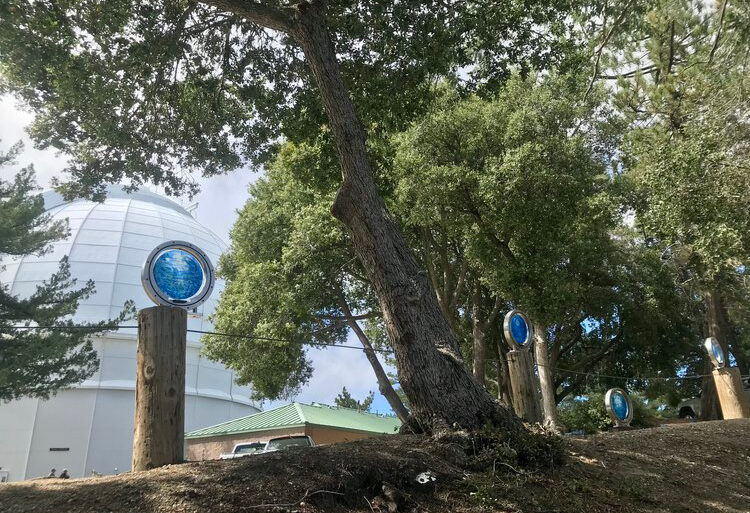The installation location is at the lookout outside of the 100″ telescope at Mt. Wilson Observatory.
The word “scrying” comes from “descry”, which means seeing something unclear by looking carefully; to catch sight of.
As technologies rapidly develop, the way we capture information changes, and so do the perspectives by which we interpret data.
Scrying is a method of divination by which one gazes into water or glass in a meditative state, employing intuition to pull out images that arise in sensory communion as guidance for the unknown. Unlike other forms of divination that provide counsel for the future in the form of tangible prescriptions, scrying is more of an opening – a practice of how one senses their environment.
Telescopic images are initially black and white and their color is deciphered and applied in post-production. Before the digital age, these images alongside their spectra were imposed on hundreds of thousands of glass plates. Spectra plates are compositions of lines exhibiting the elemental makeup that determines an object’s color. Elemental thumbprints that tell of chroma unseen by human eyes, overseen through a telescopic mirror equivalent to a million eyes.
Engaging in deep presence with one’s environment, scrying is a practice of listening to spaces outside of our conventional thoughtscape. Rational epistemology suspends in comatose to make space for the watery, sensory openness that invites in guidance. The reflective surface dances into shapeforms that resonate to stillness in the mind.
For a century human eyes would read the lines of glass-printed spectra and post-produce colors onto captured images. When this process became digitized in the 90’s, the role of coloring the objects was handed over to computers, changing the relationship with interpretation. We know what the computer reads, but what is our relationship with the unknown?
Divination by scrying does not so much look outwards toward the future, but inwards to better understand one’s relationship with the future.
Cosmos is not necessarily out there and beyond, but embedded in daily life. Looking inwards to see outwards.
The Pine trees watch over the Observatory, they hold the land that is used to gaze outwards as silver eyes shimmer. In the ancient language of trees, Pine trees symbolize long sight to see a vision of what is yet to come, while understanding this seeing comes from the point at which you are rooted.
IIn regards to cosmotechnics, philosopher Yuk Hui describes intuition as access to the real, where cultivation of intuition improves the capacity of the senses when our sensing is often handed over to digital technologies.
Through a lens of blue, scrying colors the intuition, deep forms of listening in environmental intimacies.
IIn spectroscopy, a blueshift is when an object is moving towards us. Unknowns coming closer. Alien intimacies.
The blue lenses invite you to gaze with listening eyes, inhale between internal and external landscape, blue the point of departure from which more-than-human listening comes into presence.
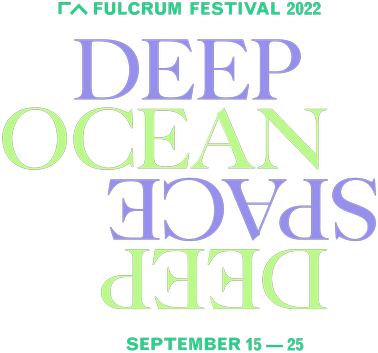
Fulcrum Arts is pleased to present Deep Ocean/Deep Space, a regional celebration across Greater Los Angeles that foregrounds the union of art and science as a powerful engine of contemporary culture. Featuring a robust program of exhibitions, performances, lectures, screenings, and workshops presented by over a dozen partner organizations, Deep Ocean/Deep Space provides public opportunities for discovering the fascinations and tensions catalyzed by two arenas of human knowledge often considered opposites.
Our 2022 edition looks above (to the furthest reaches of space) and below (to the depths of the oceans) and revels in the mysteries that surround us. By mirroring one abyss against another, it seeks to go beyond what we know about the universe thanks to the extraordinary discoveries made by astronomy and oceanography.
We invite our communities to gather in the spirit of exploration and contemplate the incredible, impossible symmetries to which we all belong, just as we invite our communities to interrogate these symmetries in terms both immediate and infinite, from our critical ecological entanglements to the vastness of the frontiers that inspired this celebration.
